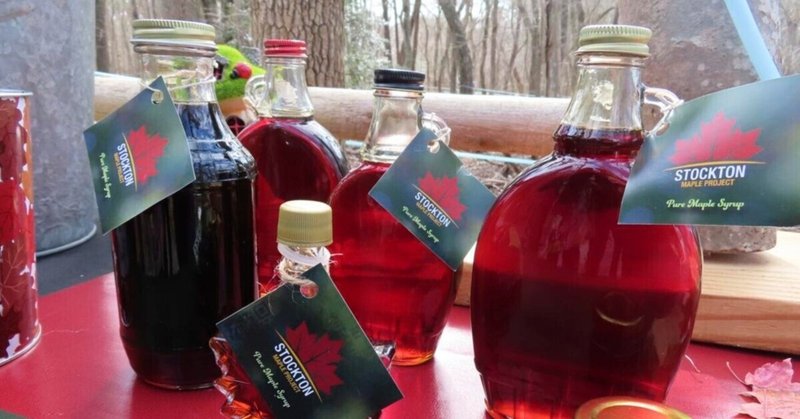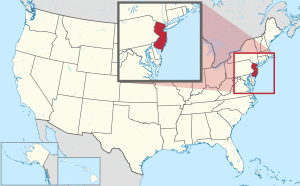
DMM英会話Daily News和訳(2024年3月29日)
New Jersey Aims to Be Maple Syrup Capital
(メープルシロップの首都を目指すニュージャージー州)
Welcome to New Jersey, known for … maple syrup?
(メープルシロップ…?で有名なニュージャージーへようこそ)

Maybe someday!
(いつかはそうなるかもしれない!)
Stockton University in southern New Jersey is trying to establish a syrup industry in a part of the state better known for its pine trees and casinos.
(ニュージャージー州南部のストックトン大学は、松の木とカジノで知られるニュージャージー州でメープルシロップ産業を確立しようとしている。)
That's not to say there's no maple syrup in New Jersey. In 2022, the state produced almost 7,000 liters of it, worth $88,000.
(ニュージャージーにメープルシロップがないわけではない。2022年、ニュージャージー州ではほぼ7,000リットルが生産され、88,000ドルの価値があった。)
But Vermont produces half of the nearly 23 million liters of maple syrup sold each year in the US, worth about $105 million.
(しかしバーモント州は、アメリカで毎年販売されるメープルシロップ約2,300万リットルの半分、約1億500万ドル相当を生産している。)
It takes about 40 liters of sap from Vermont's sugar maples to make 1 liter of syrup, said Ryan Hegarty, assistant director of the Stockton Maple Project.
(ストックトン・メープル・プロジェクトのアシスタント・ディレクター、ライアン・ヘガティ氏によれば、1リットルのシロップを作るには、バーモント州のサトウカエデから約40リットルの樹液が必要だという。)
But the red maples common to New Jersey have about half as much sugar — meaning you need more than 60 liters of sap to make the same amount of syrup, since more water needs to be removed in the cooking process.
(つまり、同じ量のシロップを作るには、60リットル以上の樹液が必要ということである。)
To make up for the difference, the university is using a new process to separate sugar and water molecules so sap that comes out of the trees at 1% sugar can enter the cooking process at 4%. The sap from Vermont's sugar maples comes out of the trees at about 2% sugar.
(その差を補うため、大学では糖分と水分子を分離する新しいプロセスを採用しており、樹木から出る糖度1%の樹液を4%で調理工程に入れるようにしている。バーモント州のサトウカエデの樹液の糖度は約2%である。)
The climate in southern New Jersey also tends to be warmer than Vermont's, which affects when and how the sap flows.
(また、ニュージャージー州南部の気候はバーモント州よりも温暖な傾向にあるため、樹液の出る時期や出方にも影響する。)
At Stockton, this usually begins around the second week of January, when metal taps are inserted into tiny holes drilled in the trees, and vacuum-powered hoses help the sap come out into collection buckets.
(ストックトンでは通常1月の第2週ごろから樹液が出始め、木に開けられた小さな穴に金属製のタップを差し込み、真空ホースで樹液をバケツに集める。)
Stockton is in its fourth year of producing syrup, and by March this year it had collected over 15,000 liters of sap from 400 trees. It expects to produce 200 liters of syrup.
(ストックトンはシロップ生産4年目で、今年3月までに400本の木から15,000リットル以上の樹液を採取した。シロップの生産量は200リットルを見込んでいる。)
Stockton's syrup is darker and richer than commercially sold syrup, and has a slightly smoky taste. The university sells it at farmers' markets — and is using it to create new flavors of salad dressing and barbecue sauce.
(ストックトンのシロップは、市販のシロップよりも濃厚でコクがあり、少しスモーキーな味がする。同大学では、このシロップをファーマーズ・マーケットで販売し、サラダ・ドレッシングやバーベキュー・ソースの新しいフレーバーを作るために使用している。)
メープルシロップ!
カナダのお土産で食べた事はあるけど、なかなか口にしないかも…
こんなにビジネスになるとは。
世界で流通するメープルシロップの約70%がカナダのケベック州産!ということからも、やはりカナダは世界に誇るメープル生産国だといえます。
なぜカナダの、しかもケベック州がそれほどたくさんのメープルシロップを生産しているのかというと~
ケベック州周辺には、カエデの中でも樹液に含まれる糖度が高い「サトウカエデ」という木が多く分布しているからなんです!
国産 天然メープルシロップができるまで ~黄金の一滴に出会う感動体験★~
日本でメープルって作ってるの…?
と思ったので調べたら地域によってはあるみたい。
でも国産はお高いかな。
見出し画像:
この記事が気に入ったらサポートをしてみませんか?
